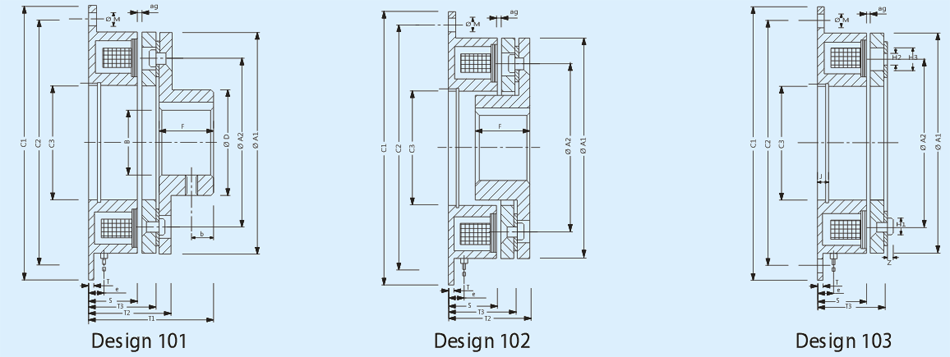Size Selection Ordering Information
Approximate necessary Torque or Size of a unit for applications involving low inertia & low operating frequency is determined as ;
TORQUE = [ 9550 x (K.W. / SPEED)] x SAFETY FACTOR [K]
SAFETY FACTOR [K]
To ensure necessary transmission safety also under extreme operating conditions adequate safety factor must be considered the value of which depends on operating conditions namely, the type of load, prime mover etc.
Typically [K] For Electric drive
- Low masses equal loading & non-intermittent operation [2.0]
- Low masses light shock load & intermittent operation [2.5]
- Medium masses, light shock load & intermittent operation [3.0]
- Large masses, light shock load & intermittent operation [3.0]
- Non-overhauling loads [2-3]
- Overhauling loads [3-4]
- Diesel engine drive [4-5]
- Compressor driven [5-6]
However, we recommend you to perform detailed calculations for which please consult us.
Life Of Friction Material
The life of the friction liner depends on a number of factors namely, the inertia to be retarded or stopped, the relative speed, the operating frequency, the temperatures at the friction surfaces etc.
These brakes must run dry. Oil, grease, foreign materials & other lubricants affect life and characteristics of friction material.
Electrical Connections
The Brakes are operated with DC. connection from three phase or AC mains network can be made via a transformer rectifier, bridge rectifier or half wave rectifier.
To restrict the high inductive voltage / back EMF a suitable Supressor and Capacitor network is provided across the connector coil as shown in fig.






